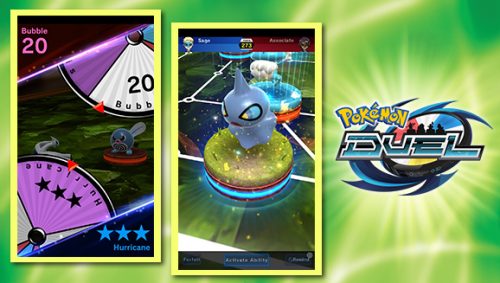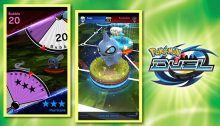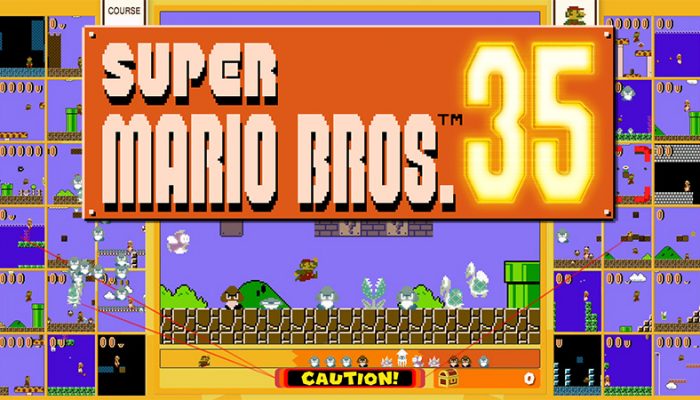 Losing to surprising plays from Shuppet is a rite of passage for most players as they progress in League Matches.
Losing to surprising plays from Shuppet is a rite of passage for most players as they progress in League Matches.
☆ NintendObs Weekly – Monday, February 27, 2017 – Sunday, March 5, 2017.

Top Tips to Dominate Pokémon Duel
We’ve already gone over the basics of how to play Pokémon Duel, the fun board-game style Pokémon battling game recently launched for iOS and Android devices. Now we’ll dive into some of the good strategies to get you on the path to winning matches.
Pokémon Duel features a large number of powerful Pokémon and tricky plates, so it can be challenging to consistently defeat clever opponents. But at the end of each month, players are rewarded for their performance with more Booster Tickets, and every day you can get Boosters for winning League Matches. So how do you beat the best to reap the rewards?
Even if you’re just getting started, there’s plenty you can do to start winning more matches. Read on for some tips on how to handle the challenges other players are likely to throw at you in League Matches.
Pokémon Duel is free to download, so check out our app page for more information on how you can start playing if you haven’t already downloaded it.
Start with Some Starter Pack Stars
Chances are you aren’t going to get a deck full of super rare and powerful Pokémon from your first few battles. Fortunately, some of the Pokémon you start the game with can be powerful contributors to your deck even as your rating climbs. Pikachu and Squirtle stand out as surprise stars.
The Rare Pikachu (which is different from the Uncommon Pikachu) you receive when you start the game is an attacker that will likely last you until you have a team full of EXs. Pikachu’s 50-damage Quick Attack can cleave through opponents with large Purple Attacks, and it has access to a huge 100-damage Thunder Attack. It can even paralyze opponents with Thunder Wave. Pikachu’s big drawback is that its highest-probability Attack is the 30-damage Thunder Shock, but each of its other Attacks is impressive.
Squirtle’s 3 MP and massive Blue Attack make it an extremely slippery Pokémon that can last you a long time. It also makes Squirtle incredibly versatile: it can be an effective goalie because of Withdraw, or it can rush the opponent’s goal and be challenging to stop thanks to its 3 MP and the difficulty of breaking through Withdraw. Squirtle isn’t likely to knock out too many opponents, but it is great at turtling.
Build a Flexible Deck
Building a deck can be tough. Do you use a bunch of strong battlers, or a bunch of speedy Pokémon that can quickly charge the opponent’s goal? You should pick different Pokémon for different strategies, but here are a few general tips to get you going.
We’d suggest using at least one 3 MP Pokémon in every deck. It’s important not to block one of your own entry points if you move first. Adding a second 3 MP Pokémon, or even a third, helps keep pressure on your opponent and makes it easier for you to react to what’s happening around the board. The quicker your team is, the greater your margin for error if you’ve been outmaneuvered. If you don’t have many strong Pokémon yet, using a bunch of 3 MP Pokémon to surround stronger opponents could be your best strategy.
Most premier battlers are 2 MP Pokémon. These Pokémon are still quick enough to get around the board to capture points and surround foes, and they often come with more power in combat than 3 MP figures. We recommend running three or four 2 MP Pokémon in most decks, depending on what you have available. In long games, these Pokémon will do most of the heavy lifting. Many players use Pokémon with strong Purple Attacks to defend their goal points, so consider an attacker or two with a Gold Attack. Pikachu is a great fit for this role early in the game.
You’ll probably want one Pokémon to spend most of the game guarding your goal. If you’re looking for a dedicated goalie, you should think about one of the stout 1 MP Pokémon. If you go that route, using a Switch Plate on at least one Pokémon to help it get around the board would be a good choice. However, the most important element of a good defensive Pokémon is the ability to survive a few Attacks, so anything with high damage Attacks, Purple Attacks with lots of stars, or ideally Blue Attacks can do well against the right opponents.
Get Key Plates from the Training Center
Getting a great plate doesn’t feel quite as exciting as getting a rare Pokémon, but it’s very difficult to win against tough opponents without great plates. Fortunately, you can get some of the best plates by completing missions in the Training Center.
The ninth Training Center duel awards Hurdle Jump, a plate used by most top Trainers. Not only does it allow you to hop over an enemy defender to charge the opposing goal point, but you can often use it defensively, too. If an opponent uses Hurdle Jump to hop over one of your Pokémon, you can normally use your own Hurdle Jump to continue the game of leap frog and get back into a sound defensive position. Hurdle Jump can be a great way to surprise your opponent by surrounding one of their Pokémon, too.
The Double Chance from the eighth duel and the X Attack from the second won’t change your strategy as much as Hurdle Jump, but they’re just as important. You’ll engage in many battles, and these plates can put the odds in your favor.
Beware of Shuppet and Gastly
Two tricky Ghost-type Pokémon are probably the most important Pokémon to be aware of if you want your rating to climb in Pokémon Duel.
Losing to surprising plays from Shuppet is a rite of passage for most players as they progress in League Matches. Shuppet isn’t a strong battler, but it has 3 MP and the amazing Infiltrator Ability. Infiltrator allows Shuppet to pass through other units when it moves (but it must still stop on an unoccupied point). Shuppet can pass through opponents to pick up surprise surround knock outs, or even slip past a defender to land on the opponent’s goal. Don’t feel bad if you lose a few games to Shuppet—it’s such a strong Pokémon that many top players use decks with five EX rarity figures and a single Shuppet.
Gastly performs similarly to Shuppet because of its Gaseous Form Ability and 3 MP. Gaseous Form is like Shuppet’s Infiltrator, meaning Gastly can slip by opponents, too. The key difference is that Gastly can’t be knocked out when it is surrounded, but it can’t knock out other Pokémon by surrounding them, either. Gastly also has the move Destiny Bond, which sometimes lets it take an opponent along with it on a trip to the Pokémon Center. These differences mean Gastly can be used more aggressively than Shuppet can, but the inability to surround foes makes it a much less popular choice among players.
We suggest engaging opposing Gastly and Shuppet in battle as quickly as possible. Their strength is moving around the board to create plays, not battling. Neither are common Pokémon, but Kirlia and Gardevoir are also great ghostbusters if you happen to have them. Both have the Ghost Sensor Ability, which prevents the tricky Ghost-type Pokémon from slipping past.
Control the Entry Points
As your rating climbs, you’ll probably notice fewer of your games will be decided by Pokémon sneaking through the enemy defense to capture an undefended goal point. Instead, the players who can control key points on the board and whittle down the enemy defense, particularly by controlling the opponent’s entry points, will frequently be victorious.
Many successful players put this strategy into action very early in battle—they spend the first few turns trying to rush one of their opponent’s entry points. It isn’t uncommon to see players send a 3 MP Pokémon down one of the sides of the board and then to use a Hurdle Jump plate on the next turn to hop over a defender and onto an entry point. Not only does this land the Pokémon in scoring position, but it limits the opponent to deploying Pokémon through the remaining entry point.
If both of your entry points are blocked, you won’t be able to send Pokémon into battle from your bench. Defending (and capturing) entry points can be almost as important as defending your goal point. Be sure to keep defenders near your entry points to punish your opponent’s rush unless you’re nearing your opponent’s goal.
Cash In on Cubes, Rare Metal, and Ingots
In addition to Pokémon figures and plates, there are three more types of items you may receive from Booster packs.
Cubes, the green boxes, are used in Pokémon fusion. Each cube can be used to increase a Pokémon’s chain level. Each time a Pokémon’s chain level increases, you can increase the damage of one of its Attacks by 1. That might not seem like much, but winning battles that would otherwise be ties can easily swing the outcome of a match. Cubes can be fused only with Pokémon of equal or lesser rarity, so you may not want to horde common cubes.
Rare Metal, the blue boxes, are also used in Pokémon fusion and award large chunks of EXP. Ingots, the yellow boxes, are best sold for Coins in the Shop. Coins are needed to complete Pokémon fusion.
Power Up Your Favorite Figures with Fusion
It can be tough to know when to use Pokémon and Rare Metal to power up your Pokémon and when to save them. Once you start getting comfortable with the Pokémon in your deck, we suggest leveling up the Pokémon you battle with to level three. It doesn’t take too much EXP, and the extra levels can make a big difference. Each time a Pokémon levels up, you can increase the size of one of its Attacks while decreasing the size of a miss.
Rolling an untimely miss can mean a lost duel—increasing the size of an important move like Pikachu’s Thunder can win one. Make sure to fuse some EXP into Pokémon you expect to use for a while. It’s worth it.
Know Your Enemies
If you face a Pokémon that you haven’t seen before, select it to check out its details. It will take a few precious seconds, but it’s always better to check out what your opponent can do before they show you by sending one of your Pokémon to the Pokémon Center (or worse).
Take particular care with your opponent’s Abilities and Purple Attacks. Magmortar’s Flame Gun can knock out opponents directly; Lugia’s Hurricane can send its opponent back to the bench; Spearow’s Fly Away and Ho-Oh’s Rainbow Wing can allow them to flutter over their battle opponents, potentially into scoring position. And Gabite can do the same thing with its Sand Rush Ability without even having to battle you if you try to initiate a battle with it.
Similarly, we’d suggest you take a close look at your opponent’s plates when the game starts. Do they have Goal Block, a plate that lets them teleport a Pokémon straight to the goal? Do they have Hurdle Jump? What about two Hurdle Jumps? These are important tactics you will want to be able to anticipate instead of react to.
There are too many potentially dangerous Pokémon and plates to list here—but we’ve seen plenty of games lost because players were caught by an avoidable surprise. Take a few seconds to read about what your opponents can do when your battles start so it doesn’t happen to you.
Beware of Evolution
One key feature we haven’t mentioned so far is Evolution. In Pokémon Duel, if you have a Pokémon that isn’t fully evolved in your deck and you own its Evolution, you can assign that Evolution when building your deck. Then, if the pre-evolved Pokémon scores a knock out, it can evolve into a version of the Evolution with more powerful Attacks!
The added power is fantastic, but use this feature with caution. Evolving Pokémon is a lot of fun, but picking up knock outs with weaker, pre-evolved Pokémon is tricky. We’ve seen players succeed using decks with Quilladin, Gabite, Magmar, Kirlia, Braixen, and many other Pokémon that have powerful Evolutions. And if you see a Pokémon that isn’t fully evolved from a high rating opponent, you can expect they’re looking to evolve. It’s a high risk, high reward strategy, but it can work.
We hope you’re enjoying Pokémon Duel. Aim for the top of the rankings! If you’re looking to learn more, check out the Featured Duels every day when you launch the game. There’s no one better to learn from than the top players. And remember to check out more Pokémon TCG and video game articles and tournament analysis at Pokemon.com/Strategy.
Source: Pokémon.
At NintendObserver, the comments are on Discord.
Click on Community to learn more. 🙂
…
…Wanna play? Buy a 3DS.
That being said, click on Pokémon Duel for everything you need to know about the game. 😀



